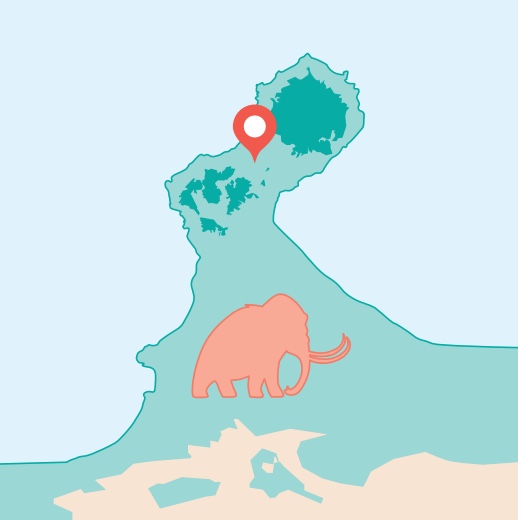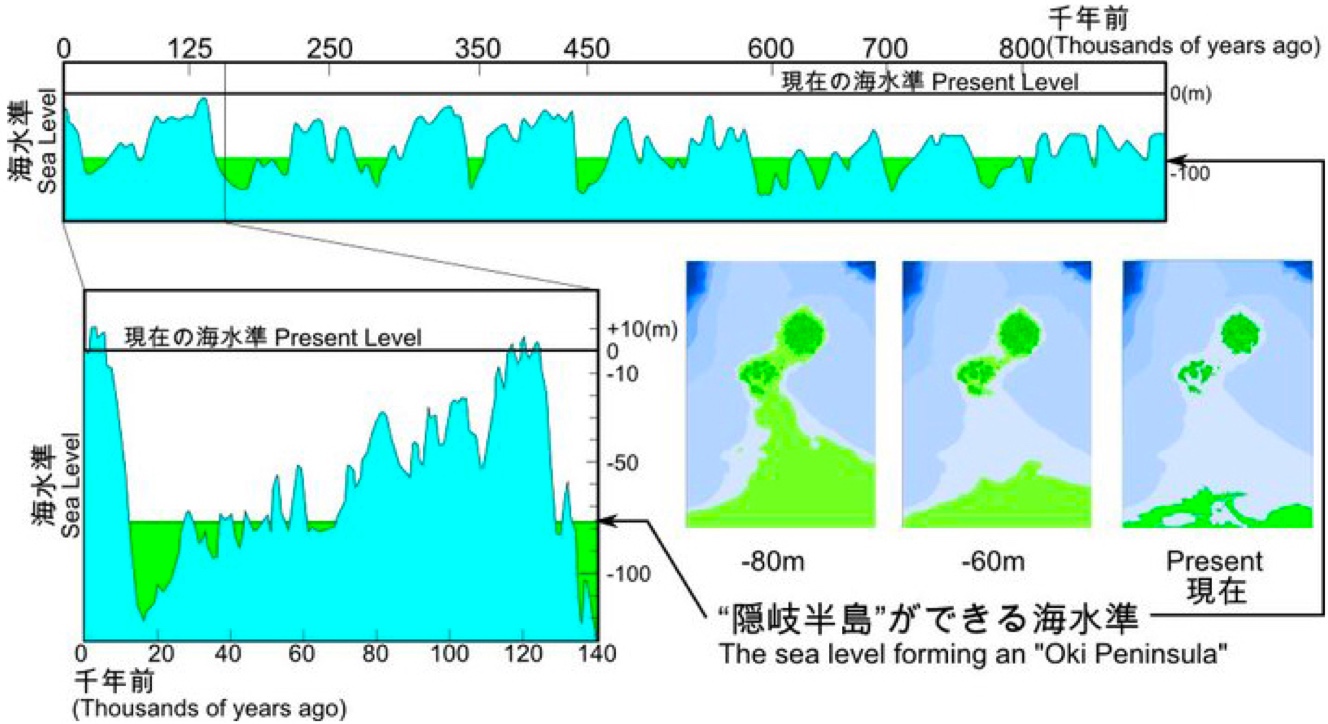Geohistory 4. From a Peninsula to Remote Islands
400 thousand years ago–present
The volcanic activity ended on the Oki Islands approximately 400 thousand years ago. Following their emergence, the islands were initially a barren terrain covered in volcanic deposits. Over time, the relentless forces of the Sea of Japan's waves, as well as wind and rain, eroded this land, sculpting it into dynamic cliffs and uniquely shaped rocks. These ongoing processes shaped the Oki Islands as we know them today.

Oki became a peninsula due to changes in sea level
The islands went through cycles of becoming a peninsula off the main island of Japan and being isolated into remote islands. These processes were caused by the rise and fall of the sea level due to climate change.

During the ice age, water that would typically flow into the ocean instead accumulated as glaciers on land. As the temperatures kept dropping, the overall seawater volume decreased even further. Over the past 5 million years, fluctuations in sea levels have become more pronounced, with the most significant variation occurring during the most recent glacial period. During this time, the sea level changed by approximately 100 meters over a span of around 10,000 years.
The strait between the Oki Islands and Japan's main island Honshu, known as the Oki Strait, has a depth of only 70–80 meters, so it has become dry land multiple times due to those fluctuations in ses level.
These periods of time have facilitated the movement of various animals and plants between the two regions.
The land of the Oki Islands created by volcanic activity
Kuniga Coast
The Kuniga Coast, located in the northwest part of Nishinoshima Island, is a representative scenic spot of the Oki Islands. Influenced by the northwest seasonal winds originating from the continent, the coast experiences powerful waves that result in erosion of the land. Visitors to this area have the opportunity to witness firsthand how the sheer force of the waves shapes the coastal terrain. Moreover, the Kuniga Coast showcases towering cliff faces that provide a peek into the island's interior.
Sekiheki (Red Cliff)
On the western coast of Chiburijima Island, situated in the southern part of the Dōzen area, there is a steep cliff with sections of vivid red rocks. This cliff, appropriately known as Sekiheki (Red Cliff), owes its distinct coloration to the presence of a crater in the vicinity and the nature of its volcanic eruptions. The cliff's red walls, decorated with a diverse array of hues and patterns, are one of the Oki Islands' most stunning coasts and stand as an iconic symbol of Chiburijima Island.
Tokage-iwa (Lizard Rock)
Tokage-iwa (Lizard Rock), located in the mountains of Dōgo Island, earned its name due to its resemblance to a lizard scaling a cliff. This peculiar rock formation appears as if a lizard is climbing the vertical cliff, with its tail firmly attached to the rock face. Lizard Rock spans a length of 26 meters from head to tail, with an additional rock positioned between the lizard and the cliff.




